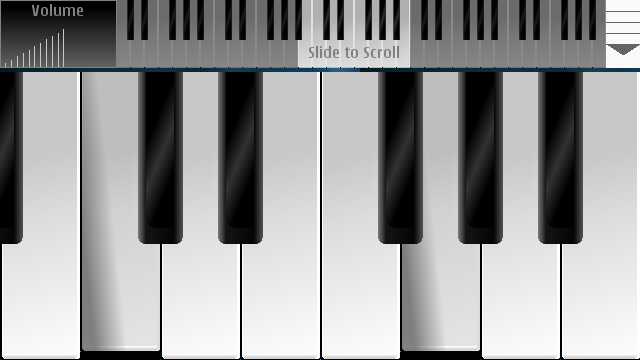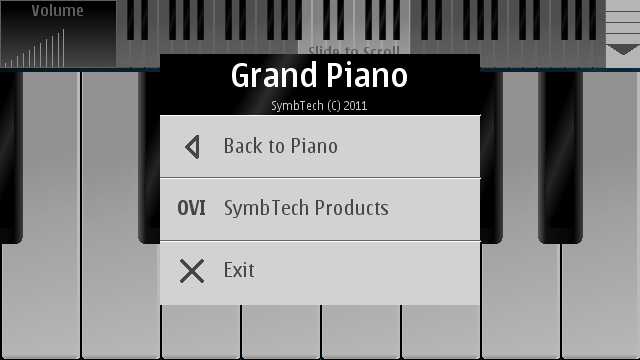Review: Grand Piano
Score:
50%
With a large multi-touch-enabled touchscreen, there's absolutely no reason why your smartphone can't emulate a musical instrument, especially the grand-daddy of them all, the piano. iPhone owners have been playing such a virtual instrument for three years now, Android phone owners have been doing the same for two years, yet development of something similar for Symbian lags woefully. As I found out in preparing this review, of Grand Piano, freshly minted in Qt and in the Ovi Store as a commercial app.
Buy Link | Download / Information Link
It may be that you haven't played with any of the virtual pianos for iOS - on the iPad and iPhone - or for Android? Let me tell you, they're startlingly good. Finger size notwithstanding, whether in a third party app or in the likes of GarageBand, the responsiveness to the touch, the sound, even the 'feel' (using the device accelerometer to detect the force with which you hit a key, all make for a surprisingly good experience. And, yes, there's full multi-touch, as many keys as you like.
All of which makes this new Qt application for Symbian something of a letdown. The basics are here: a scrollable keyboard, so that you can pick your octave, nicely sized and realistic keys (I was trying on the E7, with its 4" screen) that animate when pressed, as shown below, and claimed 'multi-touch support'. What's not to like?

The problem, as I found out when I wrote Piano for the Psion Series 5 in 1997, is in making sure that your piano sound samples are played fast enough to suspend disbelief that you're playing a virtual piano on a computer screen. The aforementioned piano apps for iOS and Android are very fast indeed, there's no appreciable lag and so it's possible to pretend that you're playing - even caressing - a real piano keyboard.
Grand Piano here, I'm afraid, isn't in the same league. Whether it's the coding of the app that's the issue or lag due to Qt or even Symbian OS's file handling, the bottom line is that you hit a key and... a note sounds at some point. Sometimes near instantly, sometimes a second later. And sometimes not at all. I'm inclined to think the problem's in the app's coding rather than Qt or Symbian, since if you take advantage of the 'multi-touch' and hold one key down, your finger can play a melody with other keys with much more impressive response. More work needed here, SymbTech.
Did I mention 'multi-touch'? Ah yes. Turns out you can only play two notes at once - not three. More like 'dual-touch'. Again, it's not clear whether this is an app limitation or a Qt one. But, again, the competition on other mobile platforms manage full multi-touch, up to as many notes as you have fingers on both hands.

Look, I'm not asking for other instrument sounds, I'm not asking for recording functions, I'm not even asking for reverb. But this isn't rocket science. If I could write a Piano application in OPL in 1997 that played well on an 18MHz processor, surely we should be seeing playable virtual pianos on Symbian smartphones with 680MHz processors in 2011?
All I ask for is a piano that can be played. Grand Piano, in its current incarnation, is a usability disaster, No - make that a playability diaster.
I will, of course, update this review if the application gets upgraded - let's hope so! Symbian - and Qt - deserve better showcases than this.
Steve Litchfield, AAS, 28 July 2011
Reviewed by Steve Litchfield at
